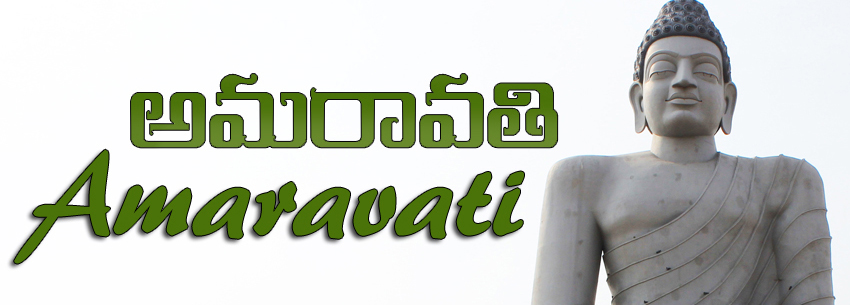 |
 |
 |
|
|
|||||||||||||||
|
|
 |
|
|
||||||||||||||||
 |
|
|
|||||||||||||||||
 |
|
||||||||||||||||||
 |
|
||||||||||||||||||
|
|
|
||||||||||||||||||
|
|
|
||||||||||||||||||
|
|
|
|
|||||||||||||||||
|
|
 |
 |
 |
 |
 |
 |
 |
 |
 |
 |
|
|
|||||||
 |
|
||||||||||||||||||
|
|
|
|
|
|
|
|
|
|
|
|
|
|
|
|
|
|
|
|
|
|
| ||||||||||
 The newly established capital of Andhra Pradesh is Amaravati, an obscure little village on the banks of river Krishna with only Amareshwara Temple to boast for its name for so long. But this quaint little place occupies a pre-eminent position in history. It's neighbouring village Dharanikota was actual site of the ancient Dhanyakataka, the capital of the later Satavahanas. Buddism has also prevailed in Amaravati for a very long time, Andhra region and its people were mentioned in Buddist Jataka tales. Accordingly, this region was once under the influence of Naga kings who brought Buddism with them and laid foundation to a stupa on the banks of river Krishna. The maha-chaitanya here is an evidence for centuries of Buddist influence over this region. Many kings have come and gone and the maha-chaitanya has undergone many changes in accordance to the whim and fancy of the rulers of the time and still stands proudly as a testment to the history of this place. Though it lies ruined by neglect now, it has been for many years, a witness the different eras of Andhra history.
The antiquity of Amaravati and Dharanikota dates back to the prehistoric times when man was in the most primitive stage of his existence. Excavations of the lowest levels of Dharanikota and the maha-chaitanya yeilded material belonging to some megalithic culture suggesting that a large community existed before the introduction of Buddhism in this area. Although the recorded history of Amaravati and Dharanikota, both places forming the then Dhanyakataka, began certianly from the time of Asoka, the great Mauryan Emperor, where Andhras were mentioned in an rock edict of Asoka. The history of the region becomes clearer when Dhanyakataka became the capital of the later Satavahanas. Before Satavahanas the Maha-Meghavahanas had sway over this place during the 1st century, later king Kubiraka name appears in stupa, several local kings fostered Buddhism, then came the dynasty of Aira who appear to be decendents of Maha-Mehghavahanas. Then began the era of Satavahanas, with Vasishthiputra Pulumavi made Dhanyakataka their capital. Art and architecture flourished in this era. Shortly after the Satavahanas, the Ikshvakus of Nagarjunakonda ruled for about half a century. All this while The maha-chaitanya enjoyed an active patronage from the local rulers, many ornamental characters and inscriptions are included into the walls and stupas of the maha-chaitanya complex, but all that came to a steady decline after the Ikshvakus. The Pallavas who came next were not great patorns of Buddhism. Their rule was supplanted by in this region by the later Salankayanas who subsequently yeilded place to Vishnukundins. The Chalukyas of Vengi succeeded the Vishnukundins. During the 12th and 13th centuries the Kota chiefs ruled from Dharanikota itself, they were followed successively by Reedi kings of Kondavidu and the Vijayanagara rulers. 
The ruins of maha-chaitanyain Amaravati Despite these political vicissitudes, the maha-chaitanya complex survived till about the 14th century. Some incriptions from the Amareshwara temple which include records of the Kota chiefs, the Reddi kings and the Vijayanagara kings clearly indicate an active thriving Buddhist community in this region. | ||||||||||
| *** | *** | |||||||||

|
||||||||||